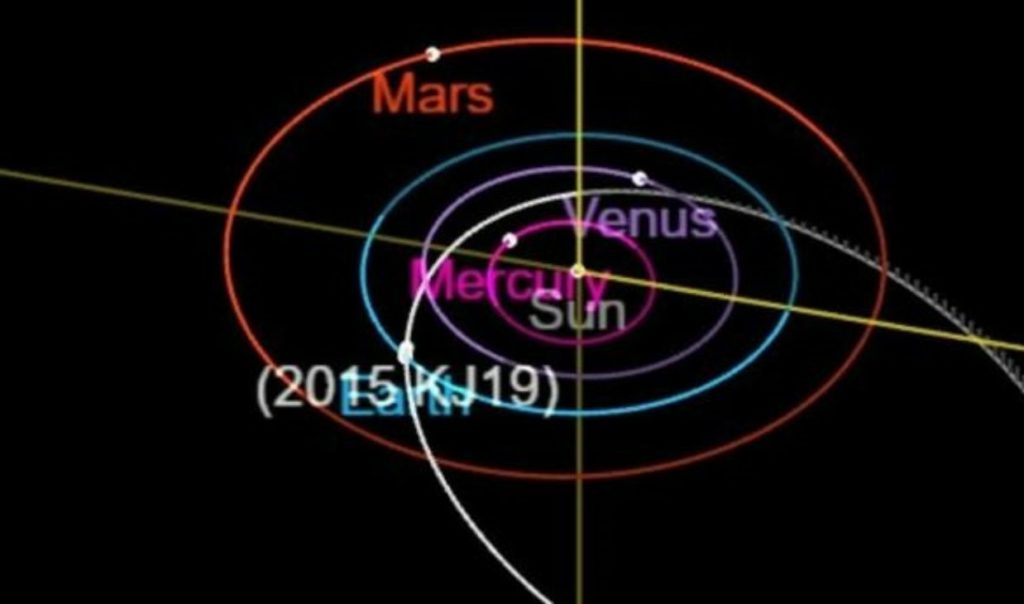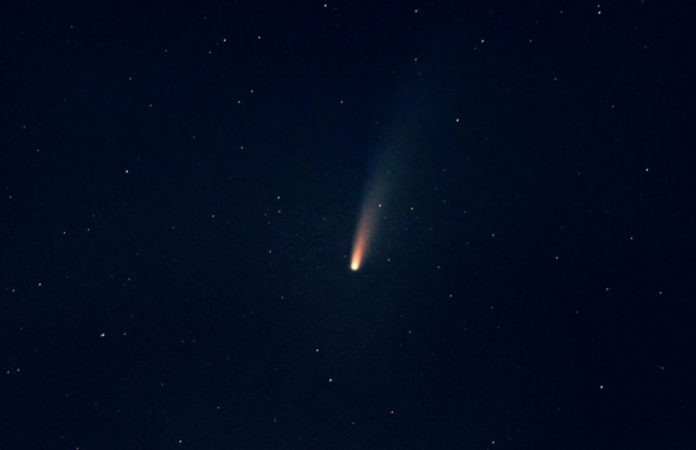The diameter of a space object is equal to the length of a football field and big enough to flatten a small city but it poses no danger to our planet.
The US National Aeronautics and Space Administration (NASA) announced that on Friday, May 14, asteroid 2015 KJ19 will approach Earth at a minimum distance of 5.8 million kilometers.
According to NASA, the space body, the size of 118 meters (the length of a football field), moves at a high speed – 23 kilometers per second, or more than 82,000 kilometers per hour.
- Brief Anger Hampers Blood Vessel Function Leading to Increased Risk of Heart Disease and Stroke – New Study
- New Blood Test Pinpoints Future Stroke Risk – Study Identifies Inflammatory Molecules as Key Biomarker
- Enceladus: A Potential Haven for Extraterrestrial Life in its Hidden Ocean Depths
- New Experiment: Dark Matter Is Not As ‘DARK’ As All We Think
- Scientists in Fear of This New Predator From Red Sea Eating Native Species in Mediterranean
At 118 meters, 2015 KJ19 would be big enough to flatten a small city.
Thankfully for us, the asteroid will miss by some distance.

Analysis from NASA shows the space rock will pass by at slightly more than 15 times the distance between the Earth and the Moon, or 15.1 lunar distances (LDs).
One LD is 384,000 kilometers, so the asteroid will come nowhere near to our planet.
Nonetheless, it is still close enough for NASA to consider the asteroid to be a near Earth Object (NEO).
NEOs provide the likes of NASA the opportunity to look at the history of the solar system.
NASA said on its JPL website:
NEOs are comets and asteroids that have been nudged by the gravitational attraction of nearby planets into orbits that allow them to enter the Earth’s neighbourhood.
The scientific interest in comets and asteroids is due largely to their status as the relatively unchanged remnant debris from the solar system formation process some 4.6 billion years ago.
The giant outer planets (Jupiter, Saturn, Uranus, and Neptune) formed from an agglomeration of billions of comets and the left over bits and pieces from this formation process are the comets we see today.
Likewise, today’s asteroids are the bits and pieces left over from the initial agglomeration of the inner planets that include Mercury, Venus, Earth, and Mars.
The European Space Agency (ESA) warned that NEOs can pose a threat to Earth.
It said:
Of the more than 600,000 known asteroids in our Solar System, more than 20,000 are NEOs.
NEOs could potentially hit our planet and, depending on their size, produce considerable damage.
While the chance of a large object hitting Earth is very small, it would produce a great deal of destruction.
NEOs thus merit active detection and tracking efforts.
- Brief Anger Hampers Blood Vessel Function Leading to Increased Risk of Heart Disease and Stroke – New Study
- New Blood Test Pinpoints Future Stroke Risk – Study Identifies Inflammatory Molecules as Key Biomarker
- Enceladus: A Potential Haven for Extraterrestrial Life in its Hidden Ocean Depths
- New Experiment: Dark Matter Is Not As ‘DARK’ As All We Think
- Scientists in Fear of This New Predator From Red Sea Eating Native Species in Mediterranean
Image Credit: Getty
